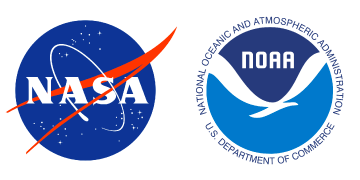
We support the collection, development, and analysis of scientific instrument/sensors data and lead Cal/Val and observational testing of observations of our Earth’s oceans, atmosphere and clouds, land cover, and polar regions; our solar system, and beyond for NOAA and NASA. Before observation of our Earth, Sun, planets, or the universe can be useful, they must first be calibrated and validated. Some of this takes place on the ground during spacecraft and instrument development and on-orbit transition to operations. Assuring the quality, validity, and provenance of the observing system (the sensors, algorithm theoretical basis, and implementing code) stratified across the observing system geometry and range of conditions, requires on-orbit calibration and characterization, in situ inter-comparisons, versioning, quality assurance, and peer-review.
INNOVIM specializes in the maturation of advanced technologies using Technology Readiness Level (TRL) principles. We offer innovative science and engineering methods that mitigate risks and efficiently tailor our processes (including formalism of reviews, documentation, margins, integration and testing, etc.). This is increasingly important with advances in miniaturization of satellite technology, where agile and cost-effective approached to calibrating and validating data from small satellites are needed. There is increasing demand for timely and skillful weather forecasts, driven by Numerical Weather Prediction (NWP) computer model runs and the assimilation of satellite data. Current and future space architectures are moving to a hybrid solution with a mix of large and small satellites. These smaller satellites are cheaper, but their shorter lifespans demand agile exploitation to maximize their value for both research and NWP.
As one example, INNOVIM works with NASA and NOAA to support the Data Product Engineering and Services (DPES) and Algorithm Management Project (AMP) for the operational Joint Polar Satellite System (JPSS). The AMP leads data products and algorithms development, sustainment, and maintenance, including product lifecycle management, algorithm theoretical basis development; instrument calibration; algorithm characterization, data product validation; requirements verification; algorithm discrepancy detection and correction; formulation of product quality monitoring methodologies; systems engineering; and algorithm science maintenance. The scope of our task supports four areas: Sensor and Environmental Data Record Science; Data Product Algorithm Management; Engineering and Requirements Support; and Calibration, Validation, and Verification technical and project leadership. Within the DPES, we provide technical and engineering services and leadership to the Government Resource for Algorithm Verification Independent Test and Evaluation (GRAVITE) a mission-critical Cal/Val system. JPSS data are used for research as well as to significantly improve the forecast skill of US and international partner NWP models.
INNOVIM has supported NASA, NOAA, USGS and DoD in design, development, application and operation of active and passive sensor systems. These sensors are used in monitoring the Earth’s environment to give a reliable assessment of the global impact of climate change, accurate weather forecasts and geo-spatial imaging to help with intelligent decision making.
INNOVIM’s research support covers studies of the atmospheres of the Earth, other planets in the solar system and exoplanets. Our research efforts employ remote sensing observations, construction/test of mathematical models, and theoretical modeling (e.g., of dynamics and chemistry).
INNOVIM’s key contribution to these missions ensured sensors’ development activities performed successfully with program goals and milestones while staying on time and within budget. Our efforts resulted in the development contractor passing 100% of scheduled reviews.
INNOVIM’s capabilities span the data lifecycle. Our scientists and engineers create and collect data through sensors located on Earth and in space, manage the infrastructure that supports large-scale data analysis, and transform the results into actionable information through data visualization techniques and decision-making systems.
INNOVIM serves US government agencies including the National Aeronautics and Space Administration (NASA), National Oceanic and Atmospheric Administration (NOAA), and Department of Defense (DoD).